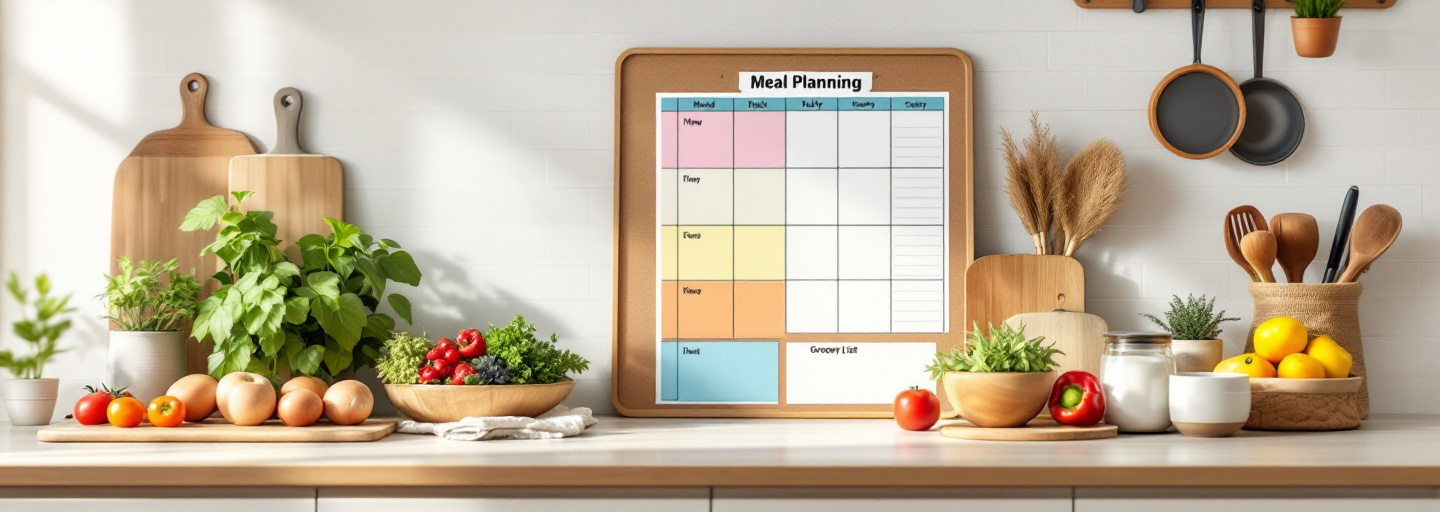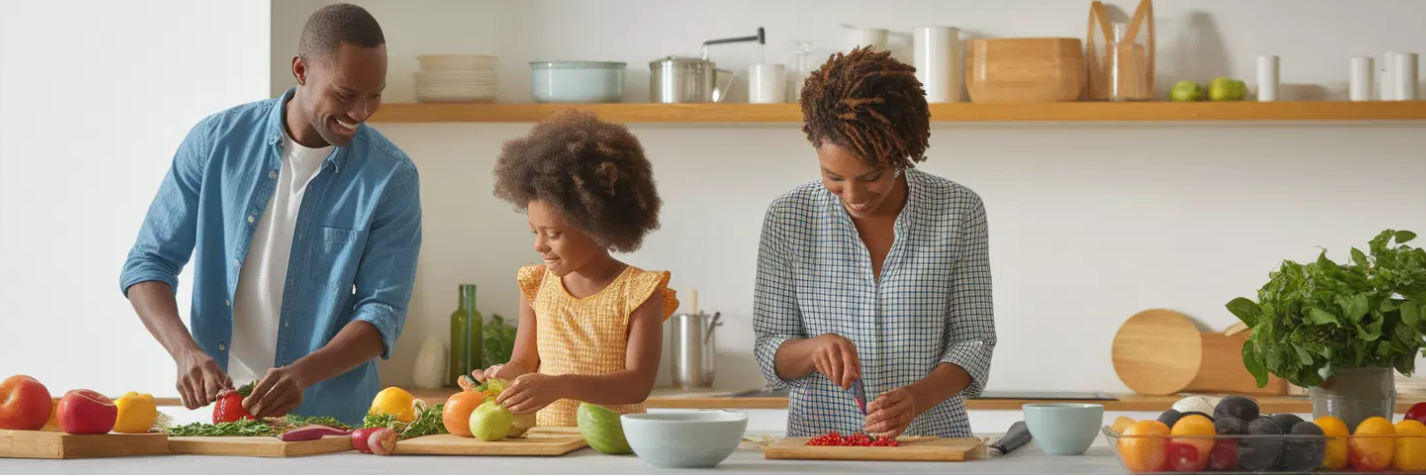Did you know the average household throws away nearly a quarter of the food they purchase? That's not just money in the trash—it's a habit we can change with some practical kitchen wisdom. Let's explore how to make the most of every ingredient in your kitchen, starting with smart meal planning.
Smart Meal Planning to Minimize Waste
Reducing food waste begins with intentional meal planning—ensuring every ingredient has a role in your weekly menu.
Take Stock Before Shopping
Begin by conducting a quick "kitchen audit." Check your refrigerator, freezer, and pantry shelves. Those half-used ingredients hiding in the back? They're your meal planning starting point. A quick scan using the Cook.aizdzj.can help you identify recipes that use these existing ingredients.
Build Your Meal Map
Prioritize ingredients that need to be used soon—like spinach in salads early in the week and in pasta later.
The Strategic Shopping List
Create your shopping list based on specific recipes you plan to make. Consider how ingredients can serve multiple purposes across different meals. For example, fresh herbs bought for Monday's pasta could garnish Wednesday's soup and Friday's roasted vegetables.
Batch Cooking Benefits
Set aside time for batch cooking sessions. When you find bell peppers on sale, roast them all at once. Use some immediately, incorporate others into tomorrow's lunch, and freeze the rest for future recipes. This approach not only prevents waste but also saves time and energy.
Plan for a few adaptable meals that can be shifted if schedules change, using ingredients with longer shelf lives.
Food Storage Tips for Maximum Freshness
Storing ingredients correctly can significantly extend their freshness and usability. Here are some essential food storage tips to help you keep your ingredients fresh for longer.
Temperature Zones Matter
Different foods need different environments to stay fresh. Store onions and potatoes in cool, dark places but keep them separate—they affect each other's ripening process. Tomatoes lose their flavor in the fridge, while herbs like basil and cilantro stay perky when treated like fresh flowers in a glass of water.
Strategic Container Use
Invest in quality airtight containers that truly seal. Glass containers work particularly well for leftovers as they don't absorb food odors or stains. When storing prepared meals, let them cool completely before sealing to prevent condensation that can lead to early spoilage.
The Art of Organization
Organize your fridge strategically—dairy on middle shelves, leafy greens in high-humidity drawers, and ethylene-producing fruits in low-humidity sections.
Smart Labeling System
Label leftovers with contents and dates to avoid the "is this still good?" dilemma.
| Food Item | Best Storage Method | Estimated Shelf Life |
|---|---|---|
| Leafy Greens | Store in a breathable bag with a paper towel in the crisper drawer | 5-7 days |
| Tomatoes | Keep at room temperature until ripe, then refrigerate | 1-2 weeks |
| Eggs | Store in their original carton in the fridge | 3-5 weeks |
| Cooked Rice | Store in an airtight container in the fridge | 4-6 days |
| Cheese | Wrap in wax paper and store in the fridge | 2-4 weeks |
Proper storage techniques can significantly extend the freshness of your food, reducing waste and saving money.
Remember, proper storage isn't just about keeping food fresh—it's about maintaining flavor and nutrients while making ingredients easily visible and accessible for your next cooking adventure.
Creative Food Waste Solutions: Reinventing Leftovers
Leftovers can be reinvented into fresh, exciting meals with a little creativity. Here are some creative food waste solutions to help you make the most of every ingredient.
Transform Through Temperature
Cold dishes can take on new life when heated differently. That leftover grilled chicken becomes the star of a warm grain bowl, while yesterday's roasted vegetables can be blended into a velvety soup. Even plain rice finds new purpose when crisped in a pan with seasonings for a quick fried rice.
The Art of Reinvention
Stale bread might seem past its prime, but it's actually a culinary opportunity. Cube and toast it for homemade croutons, or pulse it into breadcrumbs for gratins and crispy toppings. When slightly moistened with milk and eggs, it becomes the foundation for a delicious savory bread pudding .
Leftover Recipe Ideas for Every Meal
Looking for leftover recipe ideas ? Those spotted bananas or soft peaches aren't destined for the bin. Overripe fruits often have concentrated flavors that work beautifully in baked goods. Blend them into smoothies, bake them into muffins, or freeze them for future desserts. The Cook.aizdzj.can suggest specific recipes based on the ripeness of your fruits.
Mix and Match Method
Use leftovers as ready-to-go ingredients—roasted chicken for salads, vegetables for frittatas, or sauces for added flavor.
Remember, successful leftover transformation often comes down to texture and temperature changes. A crispy element here, a fresh herb there, and suddenly yesterday's meal feels brand new. The key is seeing ingredients for their potential rather than their past use.
Composting and Recycling Food Scraps
Some food waste is inevitable, but scraps like vegetable peels and coffee grounds can still serve a purpose. Here are some kitchen food waste tips to help you make the most of your scraps.
Setting Up Your Kitchen Compost System
Keep a small compost bin near your prep area for easy disposal of coffee grounds, fruit peels, and vegetable scraps.
From Scraps to Stock
Save vegetable scraps like carrot tops and onion skins in the freezer—once full, simmer them into a free, flavorful broth.
Community Composting Solutions
No backyard? No problem. Many communities now offer composting programs through farmers' markets or local gardens. Some cities even provide curbside compost collection alongside regular waste pickup. Check local resources or use apps that connect you with nearby composting locations.










